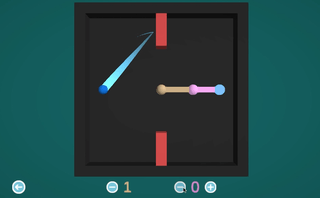Thanks for sharing your feedback, I think the idea of adding the streak to each segment is interesting, and it may have some potential. My only concern is that the screen might get too crowded -- but it might also work very well. I'll keep this idea in mind going forward.
I'm not certain I understand what you mean by saying it is more of a toy than a puzzle, but I think get it. By saying it is more of a toy, do you mean it is less about thinking to try and solve the puzzle and more about pushing buttons and seeing what the "toy" does? (Consider using more well defined words when giving feedback, that way the reader doesn't risk a misinterpretation!)
I noticed that those who are able to problem solve their way through the puzzles (with not toooo much trial and error) picked up on some form of these 2 ideas. If you're interested in the 2 ideas then read below, and if not then no worries! I really do appreciate your feedback.
The 2 key ideas (Semi Spoiler-Alert below)
- The first important idea is that rotating segments are simultaneously able to add and negate to each other's lengths. What does that mean? Well in the gif below, when the segments are horizontal their total lengths add up, but when the segments are vertical their total lengths negate each other. Notice that the blue ball moves in an almost perfectly horizontal line, and that the numbers add up to 0!

- The second important idea is: how do we make sense of the numbers?! The numbers represent the direction and speed of a rotation. Most people figure that out, but the big idea here is that certain numbers work well together for certain scenarios. I don't want to give too much away here, but consider this: Is it better for the yellow (long) segment to spin fast, or is better for the pink (shorter) segment to spin fast?
These aren't the only ways to interpret the puzzles, I've seen some people surprise me with their own way of breaking things down. Ideally, the mechanics of it all are enjoyable enough for a player to have fun even if they don't exactly know what they're doing.
I hope this breakdown was helpful :)

